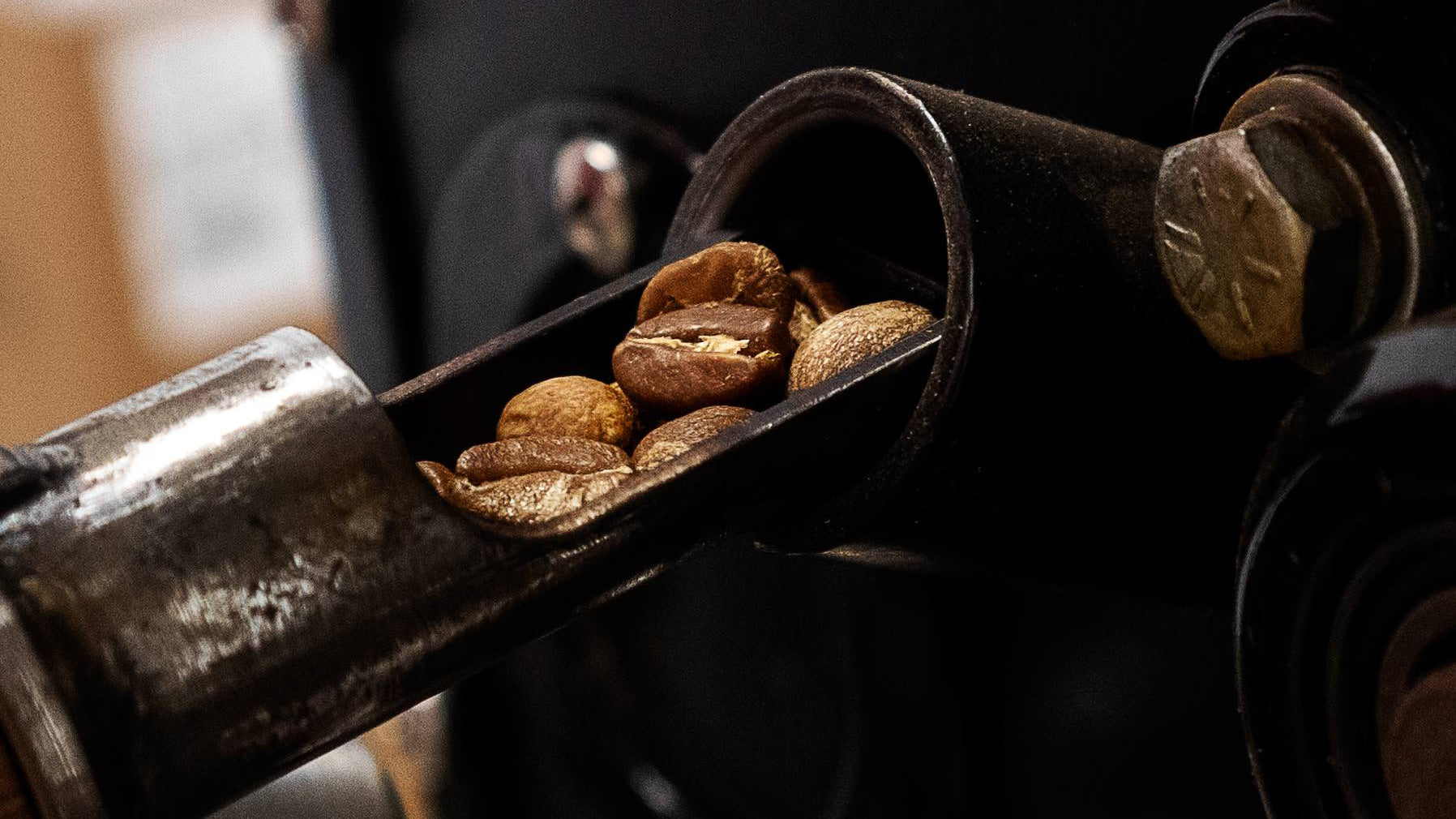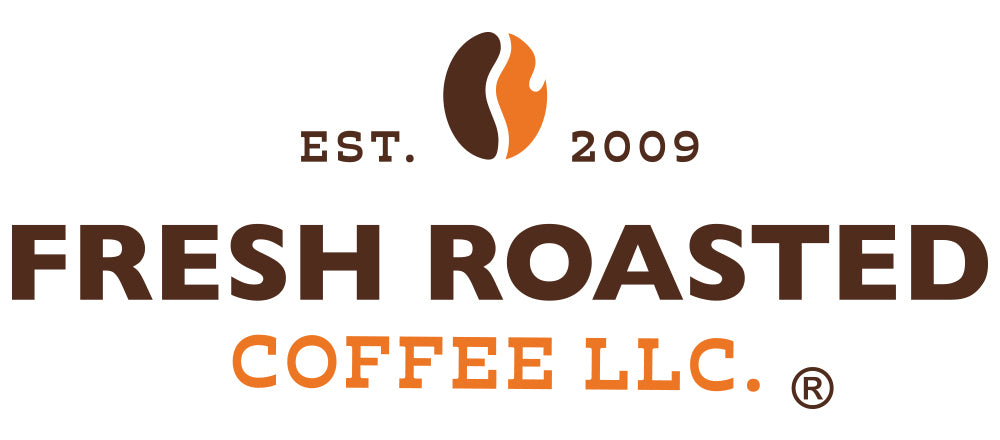The Roast Levels Between

When it comes to roast levels, most specialty roasters use these recognizable and accessible terms to describe their coffees. Light roasts tend to be brighter and more vibrant, medium roasts are usually smoother and sweeter, and the darker roasts move to toasty, bold, and intense flavors. These are the roast levels you see at the grocery store, the gas station, your fav coffee spot, online, everywhere. These aren't the only way to describe coffee roasts, though.
What Roast Levels Are There?
While the changes within and between each roast level have dramatic effects on the coffee, they're a bit too incremental to warrant further specificity, especially on a commercial scale. It's more concise to assign roasts one of the four umbrella terms (light, medium, medium-dark, and dark), as one can expect certain characteristics and flavors of a roast level without having to get into the nitty gritty of, say, the temperature of the roast.
Imagine if the speedometer in your car read only 20, 40, 60, or 80 MPH with no lines and nothing in between. We know you don't instantly go from 0 to 20 or 40 to 60, so there are speeds in between, above, and below—and that's a bit like the roasting process. “Light,” “medium,” “medium-dark,” and “dark” aren't enough to describe the entire curve of roasting. If you're a home coffee roaster, you may want more specificity when mapping your roast curves or categorizing your roasts. The minute differences in the spaces between each roast level are worth noting, as a coffee's flavor profile can change in seemingly an instant, so let's look at some of these roast levels and all their intricacies.

Light Roasts
Cinnamon Roast
First crack, which is where beans start exploding and sounding like popcorn, is more-or-less the starting line of coffee roasts. We don't recommend consuming any coffee not at least brought to first crack—Cinnamon roasts are stopped right around this time, around 350°F. It's at this roast level that the beans, being hardly altered by the roasting process, are still very acidic and can taste raw and vegetal. The traditional chocolatey flavor people associate with coffee is lost on cinnamon roasts since they haven't been roasted long enough to caramelize, leaving you with grassy, earthy flavors.
New England

Also called “Light City,” New England roasts are roasted to between 375°F and 400°F, right after first crack. The straw and earthy flavors prevalent in Cinnamon Roasts have been roasted over, but the origin's delicate notes of fruit and floral haven't. Simply put, a New England roast is a smoothed-out version of its predecessors, with crisp acidity and a mild body. New England roasts have a tea-like mouthfeel with a pleasant amount of brightness. Beans from origins like Ethiopia, Kenya, and Rwanda are often roasted to this degree so their distinctive qualities shine in the cup.
Medium Roasts
City Roast
Between 415°F and 425°F, we've pulled into medium roast country. It's at a City Roast that your coffee has completed first crack, has not yet hit second crack, and still retains a noticeable amount of its origin flavors, i.e., those light and bright notes. Here, we also start to taste sweet, sweet caramelization, so what you get in the cup is crisp citrus, vanilla, and stone fruit (for example) with a twist of Maillard flavors like caramel, chocolate, and spice.
Full City

The time between first and second crack is only about 3 minutes long, but a lot can happen here, such as changes in the beans' physical appearance and flavor in the cup. Full City clocks in at about 435°F - 440°F. That's a window of only 5°. Such a small window, however, is where the coffee finds balance. Oil starts to appear on the surface. Its brighter origin notes are smoothed out and highlighted on an underscore of toffee, hazelnut, and brittle. Full City also marks the turning point in coffee's caffeination. It's here that the zippy caffeination of lighter roasts tones down a bit, leading to a less acidic brew. Yes, as a roast progresses, caffeine is roasted off. Full City/medium roasts are generally preferred by US coffee drinkers, as they have sweeter tones and better balance between acidity and body. Coffees from Guatemala, Nicaragua, and Peru tend to shine at this roast level.
Medium-Dark Roasts
Continental Roast
While its name suggests the roast is subjective based on the continent on which it's roasted, Continental Roasts in the US happen at about 440°F. At this temperature, we're into second crack territory, where helicopter parenting your roast becomes essential. This roast level puts the browned and sweet flavors first, demonstrated in their commonly distinct smoky overtones, with a more decadent mouthfeel. This roast level is sometimes referred to as Full City+.
High Roast

Immediately following Continental by only a few degrees is High Roast. At this point, the coffee's flavor profile almost entirely reflects the roaster, with much of the complex origin notes being covered up, yet some still make it this far. Flavors present at this roast level include toasted nuts, cocoa, honeyed stone fruit, and citrus zest. High-Roast coffee is deep brown in color with noticeable oil on the surface. At these roast levels, notes will tend to move toward rich, spicy, dark chocolate, and dark berries, with lower-acidity and fuller-mouthfeel cups with hints of a drier finish (like wine and dark chocolate). Colombia, Sumatra, and Costa Rica taste amazing at this roast level.
Dark Roasts
Viennese Roast
After second crack, beans will swiftly turn very dark as we move into the dark-roast end of the roast spectrum. The levels become even more incremental. Coffee beans burn at 480°F and a Viennese Roast measures in at 455°F. Here, your coffee will take on a bold mouthfeel, akin to maple syrup, with low acidity and notes of baker's chocolate, nutmeg, and toasted nuts. Because these brews can be bitter, many people take them with milk to help balance the flavor out.
French Roast
Fresh Roasted Coffee fans love their dark roasts, so clocking in at 465°F - 470°F are French Roasts. Smooth and non-acidic, these coffees are great for espresso, French press, and truly any brew method that adds additional body to the coffee. One of the most recognizable dark roasts, French Roasts exist in the time between the middle and end of the second crack, coming out with considerable oil on the surface and a dark brown hue.
Italian Roast

These are the darkest of dark roasts, roasted to a whopping 470°F - 475°F. Italian Roast coffee bears a heavy mouthfeel, plentiful oil on the beans, and flavors that are entirely the product of the roasting process, with all origin notes having been roasted out. Coffees this dark are low in acid, albeit bitter, with bold, smoky notes of black currant, cocoa powder, and clove. When people ask for “strong” coffee, this is what they're looking for.
Not A Roast
Coffee roasters sometimes assign a name to a product that doesn't truly describe what that product is. For instance…
Espresso Roast
What comes to mind is a dark and bitter roast consumed by Italians or in lattes but there's really no such thing. Espresso is a production method that can use virtually any coffee at any roast level. Some coffees produce better crema than others, some produce a deeper or more delicate flavor, and the roast can be optimized to produce the flavors one is after in an espresso. Espressos are often blends of coffees and blends of roasts that might match a dark, heavy base with a smooth medium roast.
Our Tiger Nebula, Dark Nebula, and Drago are all considered medium roasts, but were blended to produce a perfect espresso. Lucky for us, they also produce perfect drip coffee! Espresso grind, however, is very much a thing. Espresso machines produce the best results using a very fine grind—too fine for most other production methods.
Turkish Roast
As with the faulty nomenclature Espresso Roast, Turkish Roast is not a roast at all but a production method. Those looking to make Turkish coffee in the traditional cezve should be aware that Turkish grind is powder-fine—even more fine than that used for espresso—but any coffee can be used.
Why Use These Roast Levels As A Home Coffee Roaster?
When you're roasting your own coffee—experimenting—it's wise to use these roast levels to define and categorize your roasts more clearly. Most home coffee roasters, such as the Fresh Roast SR800, are great for diving into the craft, but they don't save your roast profiles. The best way to repeat your successful roasts is with good-ol' pen and paper. Foregoing “light,” “medium,” “medium-dark,” and “dark” in favor of these roast levels will help you pinpoint your roast's trajectory more accurately, hopefully leading to a smooth, tasty cup of coffee.

1 Comment
The coffee information is awesome. I really appreciate this knowledge.I love coffee and drink on average of five cups per day (decaf). I am hopeful I will enjoy the coffee I have ordered, if so, I will join and become a regular customer with recommendation to others.
Leave a comment